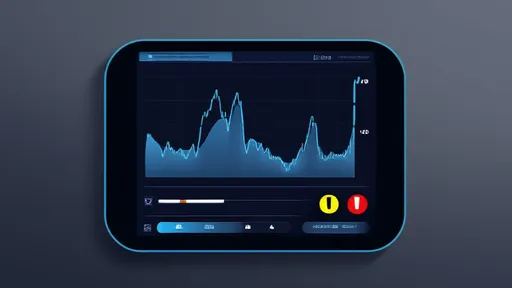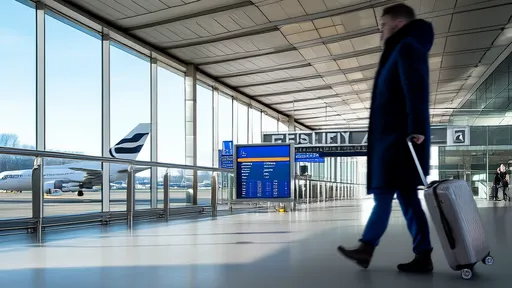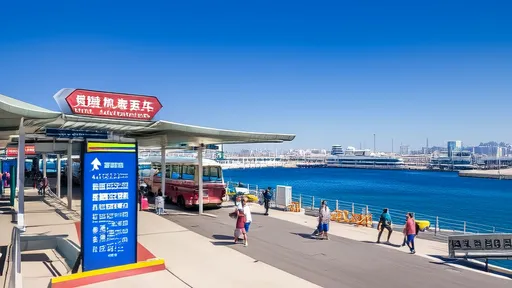For travelers navigating the complexities of international air travel, Helsinki Airport has emerged as a key hub for those transiting through the Schengen Zone. Its strategic location and efficient design make it an ideal choice for passengers seeking the shortest possible connections between flights. The airport’s layout, combined with Finland’s streamlined border control procedures, allows for remarkably quick transfer times, often beating those of larger European hubs.
The concept of Minimum Connection Time (MCT) is critical when planning a seamless transit. Helsinki-Vantaa Airport boasts one of the shortest MCTs in the Schengen Area, with just 35 minutes required for Schengen-to-Schengen transfers. For passengers arriving from outside the Schengen Zone and continuing to another Schengen destination, the minimum connection time extends to 40 minutes—still among the fastest in Europe. These tight windows are made possible by the airport’s compact single-terminal design and Finland’s efficient border control systems.
What sets Helsinki apart is its unique geographical position as the northernmost major transit hub in Europe. This location makes it a natural gateway between Asia and Europe, with numerous airlines optimizing their flight schedules to facilitate quick turnarounds. Finnair, the national carrier, has structured its timetable around these rapid connections, particularly for travelers flying between Asian cities and European destinations. The airline’s focus on the “shortest route between Europe and Asia” aligns perfectly with Helsinki Airport’s quick-transfer capabilities.
The airport’s transfer area deserves special mention. Unlike sprawling hubs where passengers might need to clear security multiple times during a connection, Helsinki’s transfer process is refreshingly straightforward. Schengen-to-Schengen transfers often require no additional security checks, while non-Schengen arrivals benefit from dedicated transfer corridors that minimize walking distances. The entire facility is designed with the connecting passenger in mind, from clear signage in multiple languages to strategically placed service desks.
Border control efficiency plays a pivotal role in Helsinki’s quick-connection success. Finland has invested heavily in automated passport control systems and staff training to ensure swift processing. Even during peak hours, non-Schengen passengers typically clear immigration in under 15 minutes—a remarkable feat compared to the lengthy queues common at other major European airports. This efficiency becomes particularly valuable for travelers with tight connections or those trying to make up time after delayed inbound flights.
Weather conditions in Helsinki might raise concerns for some travelers, especially during winter months. However, the airport’s exceptional snow removal capabilities and around-the-clock deicing services ensure operations continue smoothly regardless of weather. This reliability contributes significantly to maintaining those short connection times year-round. The airport authority’s commitment to punctuality is reflected in their consistently high on-time performance statistics, which outperform many warmer-climate airports.
For passengers with slightly longer layovers—even those just an hour or two—Helsinki Airport offers amenities that make brief stops comfortable. From high-quality lounges with shower facilities to quick-service dining options positioned near gates, the airport understands the needs of transit passengers. Free high-speed WiFi throughout the terminal allows travelers to stay connected during their short stay, while charging stations at every gate ensure devices remain powered for the next leg of the journey.
The growing importance of digital tools has further enhanced Helsinki’s connection capabilities. The airport’s mobile app provides real-time updates on gate changes and connection times, helping passengers navigate their transfers with confidence. Combined with flight information displays positioned throughout the terminal, travelers can easily monitor their connection status and make adjustments if needed. This technological integration removes much of the stress typically associated with tight international connections.
Looking ahead, Helsinki Airport continues to refine its transfer processes. Planned expansions and technological upgrades aim to further reduce minimum connection times while improving the overall passenger experience. As global air travel patterns evolve and passengers increasingly prioritize efficient routing, Helsinki’s position as the Schengen Zone’s fastest-connection hub appears secure. For time-conscious travelers crossing between continents or hopping between European cities, this Nordic airport offers an unbeatable combination of speed, efficiency, and reliability.

By /Aug 4, 2025

By /Aug 4, 2025

By /Aug 4, 2025

By /Aug 4, 2025

By /Aug 4, 2025

By /Aug 4, 2025

By /Aug 4, 2025

By /Aug 4, 2025

By /Aug 4, 2025

By /Aug 4, 2025

By /Aug 4, 2025

By /Aug 4, 2025

By /Aug 4, 2025

By /Aug 4, 2025

By /Aug 4, 2025

By /Aug 4, 2025

By /Aug 4, 2025

By /Aug 4, 2025

By /Aug 4, 2025

By /Aug 4, 2025